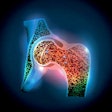Dear PACS Insider,
Teleradiology and telemedicine are getting a fair amount of publicity, even though these technologies have been in use for more than 30 years. Their intrinsic value is extending the reach of medicine to specialists who are not located where patients or their diagnostic images happen to be.
Teleradiology technology originated as video photographs of x-ray images. Now, the tiny camera inside your mobile phone produces images with resolution that far surpass those of the early video cameras.
Could images from mobile phones be used in lieu of a teleradiology system if none was available? German researchers from the University Hospital Bonn determined that the answer is "Yes, but ... ." Click here to read this article. And for a nostalgic look back on the history of teleradiology, click here.
Of particular interest is a flourishing telecardiology network that is helping to better manage the treatment of patients potentially having heart attacks or strokes in the southwestern tip of Italy. Such a service deserves replication, and we think you'll want to share this article with your emergency department colleagues.
Denmark is initiating an ambitious two-year telemedicine pilot that could have implications for PACS and teleradiology users. Associate Editor Frances Rylands-Monk reports on a presentation made during a Healthcare Information and Management Systems Society webinar.
However, is remote access to diagnostic images becoming a burden to radiologists? This subject was discussed earlier this month in Milan at the Management in Radiology congress. Again, Frances Rylands-Monk covers this talk here.
Another area of concern is the eyesight of radiologists who are spending an increasing amount of time looking at digital images on display monitors. Staff Writer Erik L. Ridley investigates in a must-read article.



















